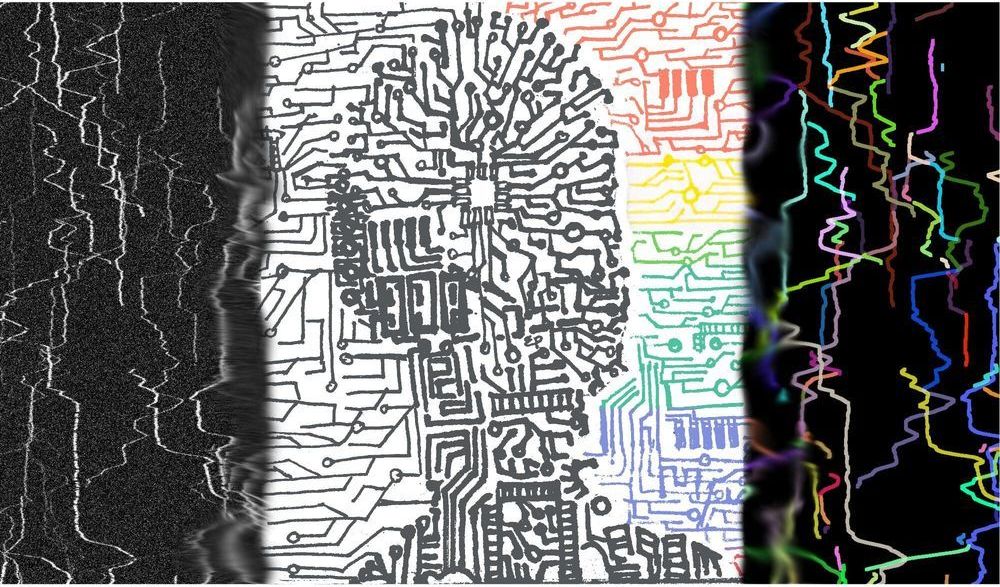This week DARPA kicks off a competition called the Subterranean Challenge, where hordes of robots are unleashed into caves and tunnels to test how well they can autonomously navigate these environments. One team, headed up by NASA’s Jet Propulsion Lab (JPL), is entering a crew of bots that could inform future designs of spacefaring robots that explore caves and lava tubes on other planets and moons.
Get the latest international news and world events from around the world.

There’s a place at the bottom of the Pacific Ocean where hundreds of giant spacecraft go to die
What happens to a spacecraft once it dies?
When a spacecraft completes its mission or runs out of fuel, it’s sent to what NASA calls a Spacecraft Cemetery. Three thousand miles off the Eastern coast of New Zealand and more than 2 miles deep, it’s the one place farthest from any land mass on Earth.
The perfect spot to land giant chunks of spacecraft that are traveling more than 180 mph upon impact. NASA predicts the chance of a spacecraft hitting someone out here to be around 1 in 10,000.

Scientists tasked a supercomputer with building millions of simulated universes
Figuring out how our reality took shape over billions of years is no easy task for scientists. Theories about how the Big Bang played out and the immediate aftermath are a dime a dozen, but researchers led by a team from the University of Arizona think they might stumble upon some of the secrets of galaxy formation by asking a supercomputer to simulate millions of virtual universes and seeing which ones come closest to what we see today.
In a new research paper published in Monthly Notices of the Royal Astronomical Society, the team explains how they used a supercomputer system nicknamed the “Universe Machine” to watch billions of (virtual) years of galaxy formation play out before their eyes.

Astronomers Have Detected a Whopping 8 New Repeating Signals From Deep Space
One of the biggest mysteries out there in the Universe is inching closer to answers. An astonishing eight new repeating radio signals known as fast radio bursts (FRBs) have been detected flaring from deep space.
At the start of 2019, just one of these mysterious signals, FRB 121102, was known to flash repeatedly. In January, scientists reported a second repeating one (FRB 180814).
This new paper — available on preprint server arXiv, and accepted into The Astrophysical Journal Letters — describes eight new repeating signals detected by the Canadian Hydrogen Intensity Mapping Experiment (CHIME) radio telescope.

Gift Launches New UCSF Benioff Center for Microbiome Medicine
Faculty engaged in microbiome research across campus have previously shown that our microbiome plays a key role in defining human health. For example, microbial dysfunction in the infant gut – characterized by the enrichment of particular microbial genes and their products – drive immune dysfunction and can be used to predict the development of allergy and asthma in childhood. Perturbed microbial ecosystems across the human body have been linked to autoimmune disease, metabolic syndromes such as obesity and diabetes, skin diseases, and even multiple sclerosis. Gut microbes can even contribute to metabolizing drugs and influence how much enters the circulation.
Leveraging this expertise and collaborations with UCSF Benioff Children’s Hospitals in Oakland and San Francisco and institutions nationwide, the UCSF Benioff Center for Microbiome Medicine aims to develop a holistic understanding of our earliest interactions with microbes in utero, through birth, and in early life. These efforts aim to find ways of predicting and preventing not only asthma and allergy, but other childhood diseases – including dermatological, gastrointestinal, respiratory and neurological disorders.
“At the same time that we are developing therapeutic strategies to restore microbial ecosystems once they have been damaged,” Lynch said. “We also need to find ways to intervene in at-risk populations in very early life to prevent chronic diseases before they start.”

The human brain in ‘unprecedented’ detail, thanks to powerful MRI
S cientists are very careful about claiming that no one else has ever done something before — the last thing they need is some overlooked lab saying, um, right here! — but researchers at Massachusetts General Hospital are confident they’re on solid ground. Their high-resolution MRIs of a complete, intact human brain, they say, are “unprecedented.”
Other labs have sliced up brains and seen features down to 80 or even 50 microns. (One micron is a 10,000th of a centimeter, and 75 of them is about the width of a human hair.) The MGH team got 100-micron resolution in a whole brain, producing the most detailed three-dimensional images of an intact brain ever seen.
The scientists started with an MRI machine with a 7-tesla magnet, a significantly stronger magnetic field than the 0.5-to-3 teslas of most MRIs in clinical use, which optimized the signal-to-noise ratio. But they also built custom state-of-the-art software that, depending which physics parameters it directs the MRI to optimize, reveals particular features of the tissue, from tiny bleeds to swelling to white and gray matter.

Machine learning tool improves tracking of tiny moving particles
Scientists have developed an automated tool for mapping the movement of particles inside cells that may accelerate research in many fields, a new study in eLife reports.
The movements of tiny molecules, proteins and cellular components throughout the body play an important role in health and disease. For example, they contribute to brain development and the progression of some diseases. The new tool, built with cutting-edge machine learning technology, will make tracking these movements faster, easier and less prone to bias.
Currently, scientists may use images called kymographs, which represent the movement of particles in time and space, for their analyses of particle movements. These kymographs are extracted from time-lapse videos of particle movements recorded using microscopes. The analysis needs to be done manually, which is both slow and vulnerable to unconscious biases of the researcher.

Snap releasing new Spectacles that capture 3D images
Snap on Tuesday unveiled new-generation Spectacles sunglasses that can take 3D pictures to share on its Snapchat messaging service known for ephemeral posts.
Spectacles 3, set for release late this year, were described as a limited release and priced at $380, more than twice the price of an “Original” version available at the Southern California company’s website.
Spectacles sunglasses with built-in cameras that synchronize wirelessly with smartphones to share pictures or video snippets to Snapchat were launched in late 2016.

How scientists use household bleach and quantum physics to hunt down cancer
A team of scientists from MIT and Rice University recently discovered a new method for creating qubits that could revolutionize both quantum computing and cancer research – and all it takes is some household bleach and a UV light.
Qubits are the basic units of information used in quantum computing. Typically, when scientists create them they go through a complex process involving lasers or shearing single photons off of light using complex, difficult-to-work-with reactants that produce unwanted side-effects. These time consuming methods often require trial-and-error and seldom produce perfect results.

Researchers discover that the rate of telomere shortening predicts species lifespan
A flamingo lives 40 years and a human being lives 90 years; a mouse lives two years and an elephant lives 60. Why? What determines the lifespan of a species? After analyzing nine species of mammals and birds, researchers at the Spanish National Cancer Research Center (CNIO) found a very clear relationship between the lifespan of these species and the shortening rate of their telomeres, the structures that protect the chromosomes and the genes they contain. The relationship is expressed as a mathematical equation, a formula that can accurately predict the longevity of the species. The study was done in collaboration with the Madrid Zoo Aquarium and the University of Barcelona.
“The telomere shortening rate is a powerful predictor of species lifespan,” the authors write in the prestigious journal Proceedings of the National Academy of Sciences (PNAS).
The study compares the telomeres of mice, goats, dolphins, gulls, reindeer, vultures, flamingos, elephants and humans, and reveals that species whose telomeres shorten faster have shorter lives.